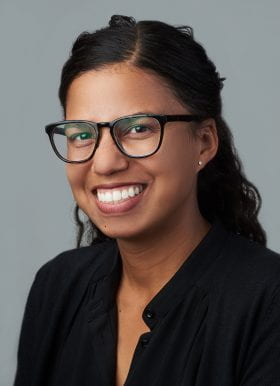
Santina Contreras
Climate Action Workshop
Assistant Professor in the City and Regional Planning Section of the Knowlton School of Architecture at Ohio State University, Santina Contreras will participate in the Climate Action Workshop of Summit Session 4 on November 6, at 10:45am central time.
Santina Contreras’s Biography
Santina Contreras is an Assistant Professor in the City and Regional Planning Section of the Knowlton School of Architecture at Ohio State University. She serves as a faculty affiliate of the Sustainable Institute and the Center for Latin American Studies.
Her research and teaching focus on the intersection of environmental hazards, international development, and community development planning. The overarching goal of her research is to contribute to a deeper understanding of the planning of communities vulnerable to environmental hazards and broader development concerns in the United States, Latin America, and the Caribbean. In her work, she takes an interdisciplinary approach towards understanding relationships between local communities and external stakeholders surrounding natural hazard events and international development projects. Contreras has extensive experience working in the private and nonprofit sectors on the design and implementation of housing and post-disaster projects. This has included engaging with diverse communities vulnerable to environmental hazards in California, Ohio, Puerto Rico, Mexico, and Haiti.
Before joining the faculty at OSU, Contreras worked at the University of Colorado Boulder as a postdoctoral research associate in the Environmental Design Program and a Researcher-in-Residence at the Natural Hazards Center. She holds a B.S. (University of California, San Diego) and a M.S. (University of California, Berkeley) in Structural Engineering. She received her Ph.D. in Planning, Policy, and Design from the University of California, Irvine. She is a former Ford Foundation dissertation fellow and a current fellow of the National Science Foundation’s Enabling the Next Generation of Hazards Researchers Program.